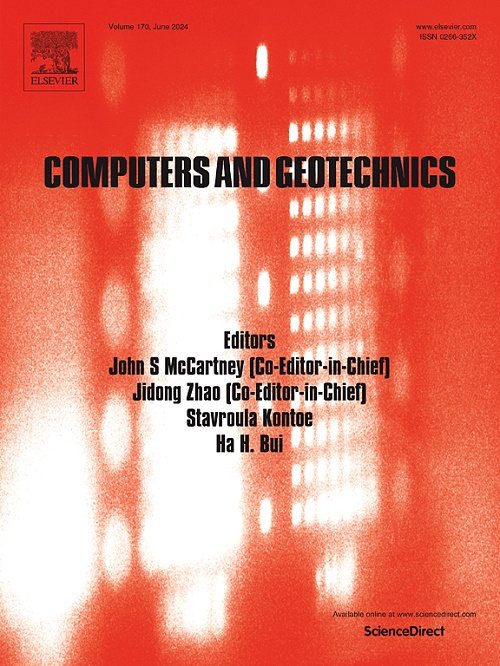Predicting steady-state seepage flow in complex half-space using a modified scaled boundary finite element method
IF 5.3
1区 工程技术
Q1 COMPUTER SCIENCE, INTERDISCIPLINARY APPLICATIONS
引用次数: 0
Abstract
Seepage problems in half-space domains are crucial in hydrology, environmental, and civil engineering, involving groundwater flow, pollutant transport, and structural stability. Typical examples include seepage through dam foundations, coastal aquifers, and levees under seepage forces, requiring accurate numerical modeling. However, existing methods face challenges in handling complex geometries, heterogeneous media, and anisotropic properties, particularly in multi-domain half-spaces. This study addresses these challenges by extending the modified scaled boundary finite element method (SBFEM) and using this method to explore steady seepage problems in complex half-space domain. In the modified SBFEM framework, segmented straight lines or curves, parallel to the far-field infinite boundary, are introduced as scaling lines, with a one-dimensional discretization applied to them, thereby reducing computational costs.Then the weighted residual method is applied to obtain the modified SBFEM governing equations and boundary conditions of steady-state seepage problem according to the Laplace diffusion equation and Darcy’s law. Furthermore, the steady seepage matrix at infinity is obtained by solving the eigenvalue problem of Schur decomposition and then the 4th-order Runge-Kutta algorithm is used to iteratively solve until the seepage matrix at the boundary lines is reached. Comparisons between the present numerical results and solutions available in the published work have been conducted to demonstrate the efficiency and accuracy of this method. At the same time, the influences of the geometric parameters and complex half-space domain on the seepage flow characteristics in complex half-space domain are investigated in detail.
基于改进尺度边界有限元法的复半空间稳态渗流预测
半空间域的渗流问题在水文、环境和土木工程中是至关重要的,涉及地下水流动、污染物输送和结构稳定性。典型的例子包括大坝基础、沿海含水层和渗流力作用下的堤坝的渗流,这些都需要精确的数值模拟。然而,现有的方法在处理复杂几何形状、非均质介质和各向异性方面面临挑战,特别是在多域半空间中。本研究通过扩展改进的尺度边界有限元法(SBFEM),并利用该方法研究复杂半空间域的稳定渗流问题,解决了这些挑战。在改进的SBFEM框架中,引入平行于远场无限边界的分段直线或曲线作为标度线,并对其进行一维离散化,从而降低了计算成本。然后根据拉普拉斯扩散方程和达西定律,应用加权残差法得到稳态渗流问题的修正SBFEM控制方程和边界条件。通过求解Schur分解的特征值问题,得到无穷远处的稳定渗流矩阵,然后利用四阶龙格-库塔算法迭代求解,直至得到边界处的渗流矩阵。本文的数值计算结果与已发表的研究结果进行了比较,证明了该方法的有效性和准确性。同时,详细研究了几何参数和复半空间域对复半空间域中渗流特性的影响。
本文章由计算机程序翻译,如有差异,请以英文原文为准。
求助全文
约1分钟内获得全文
求助全文
来源期刊

Computers and Geotechnics
地学-地球科学综合
CiteScore
9.10
自引率
15.10%
发文量
438
审稿时长
45 days
期刊介绍:
The use of computers is firmly established in geotechnical engineering and continues to grow rapidly in both engineering practice and academe. The development of advanced numerical techniques and constitutive modeling, in conjunction with rapid developments in computer hardware, enables problems to be tackled that were unthinkable even a few years ago. Computers and Geotechnics provides an up-to-date reference for engineers and researchers engaged in computer aided analysis and research in geotechnical engineering. The journal is intended for an expeditious dissemination of advanced computer applications across a broad range of geotechnical topics. Contributions on advances in numerical algorithms, computer implementation of new constitutive models and probabilistic methods are especially encouraged.
 求助内容:
求助内容: 应助结果提醒方式:
应助结果提醒方式:


